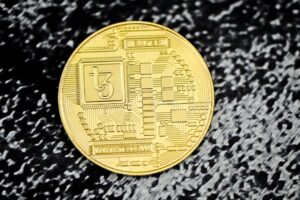## Tech Tariff Truce: Breathing Room or Band-Aid Solution?
The Biden administration’s recent decision to pause tariffs on certain tech imports from China has sparked debate, with some analysts drawing parallels to past financial crises interventions. While the two-year suspension aims to alleviate inflationary pressures on key tech components, questions linger about whether this is a genuine step towards easing trade tensions or a temporary fix reminiscent of the government’s responses to the Bear Stearns and Silicon Valley Bank collapses. The tariff reprieve covers a range of goods, including crucial inputs for electric vehicle batteries, power tools, and other consumer electronics. For consumers, this could translate to slightly lower prices on some tech gadgets, offering a welcome respite amidst rising living costs. But the bigger picture is far more complex, raising questions about the long-term economic impact and the broader US-China trade relationship.
This move comes at a time of escalating tensions between the two superpowers. The US has been increasingly concerned about China’s growing technological prowess and its potential impact on national security. Recent restrictions on semiconductor exports to China and investigations into Chinese tech companies underscore the ongoing trade war. The tariff pause, therefore, appears somewhat contradictory to this broader trend. Some analysts suggest it’s a tactical maneuver to address immediate inflationary concerns without significantly undermining the US’s strategic goals. Others see it as a sign of potential softening in the trade war, perhaps paving the way for future negotiations. Comparing the situation to Bear Stearns and SVB, however, raises important questions about the nature of the intervention. Both those instances were characterized by rapid government action to prevent systemic collapse, but they also involved bailouts of institutions deemed “too big to fail,” leading to debates about moral hazard and the role of government in markets. The tariff pause, while not a direct bailout, shares some similarities in its attempt to stabilize a volatile situation.
Ultimately, whether the tech tariff pause is a genuine turning point in US-China trade relations or a short-term band-aid remains to be seen. The two-year timeframe suggests a temporary measure, potentially designed to buy time for more comprehensive negotiations. However, the underlying tensions and strategic competition between the two countries are unlikely to disappear anytime soon. For young consumers, the potential for slightly lower prices on some electronics is welcome news. But understanding the broader geopolitical context is crucial for navigating the complexities of the global economy. This temporary truce offers a valuable opportunity to observe how these trade dynamics evolve and what implications they hold for the future of technology and international relations.





